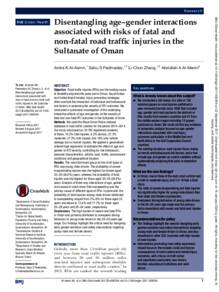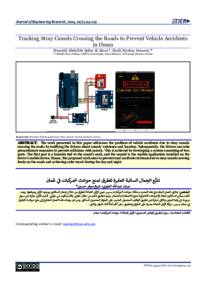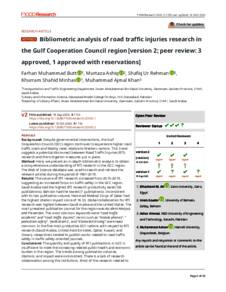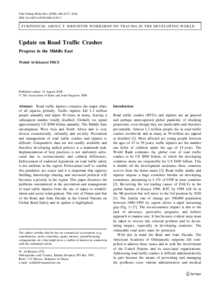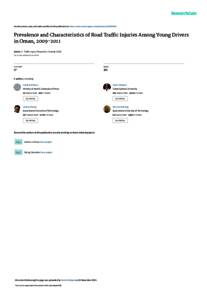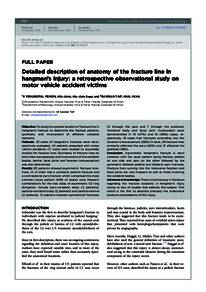Document
Disentangling age-gender interactions associated with risks of fatal and non-fatal road traffic injuries in the Sultanate of Oman.
Identifier
DOI: 10.1136/bmjgh-2017-000394
Source
BMJ Global Health. v. 2, 3, e000394
Contributors
Country
United Kingdom.
City
London.
Publisher
BMJ Publishing Group.
Gregorian
2017-01-01
Language
English
English abstract
Objective Road traffic injuries (RTIs) are the leading cause of disability-adjusted life years lost in Oman, Saudi Arabia and United Arab Emirates. Injury prevention strategies often overlook the interaction of individual and behavioural risk factors in assessing the severity of RTI outcomes. We conducted a systematic investigation of the underlying interactive effects of age and gender on the severity of fatal and non-fatal RTI outcomes in the Sultanate of Oman. Methods We used the Royal Oman Police national database of road traffic crashes for the period 2010-2014. Our study was based on 35 785 registered incidents: of these, 10.2% fatal injuries, 6.2% serious, 27.3% moderate, 37.3% mild injuries and 19% only vehicle damage but no human injuries. We applied a generalised ordered logit regression to estimate the effect of age and gender on RTI severity, controlling for risk behaviours, personal characteristics, vehicle, road, traffic, environment conditions and geographical location. Results The most dominant group at risk of all types of RTIs was young male drivers. The probability of severe incapacitating injuries was the highest for drivers aged 25-29 (26.6%) years, whereas the probability of fatal injuries was the highest for those aged 20-24 (26.9%) years. Analysis of three-way interactions of age, gender and causes of crash show that overspeeding was the primary cause of different types of RTIs. In particular, the probability of fatal injuries among male drivers attributed to overspeeding ranged from 3%-6% for those aged 35 years and above to 13.4% and 17.7% for those aged 25-29 years and 20-24 years, respectively. Conclusions The high burden of severe and fatal RTIs in Oman was primarily attributed to overspeed driving behaviour of young male drivers in the 20-29 years age range. Our findings highlight the critical need for designing early gender-sensitive road safety interventions targeting young male and female drivers.
ISSN
2059-7908
Resource URL
Category
Journal articles

